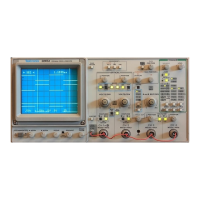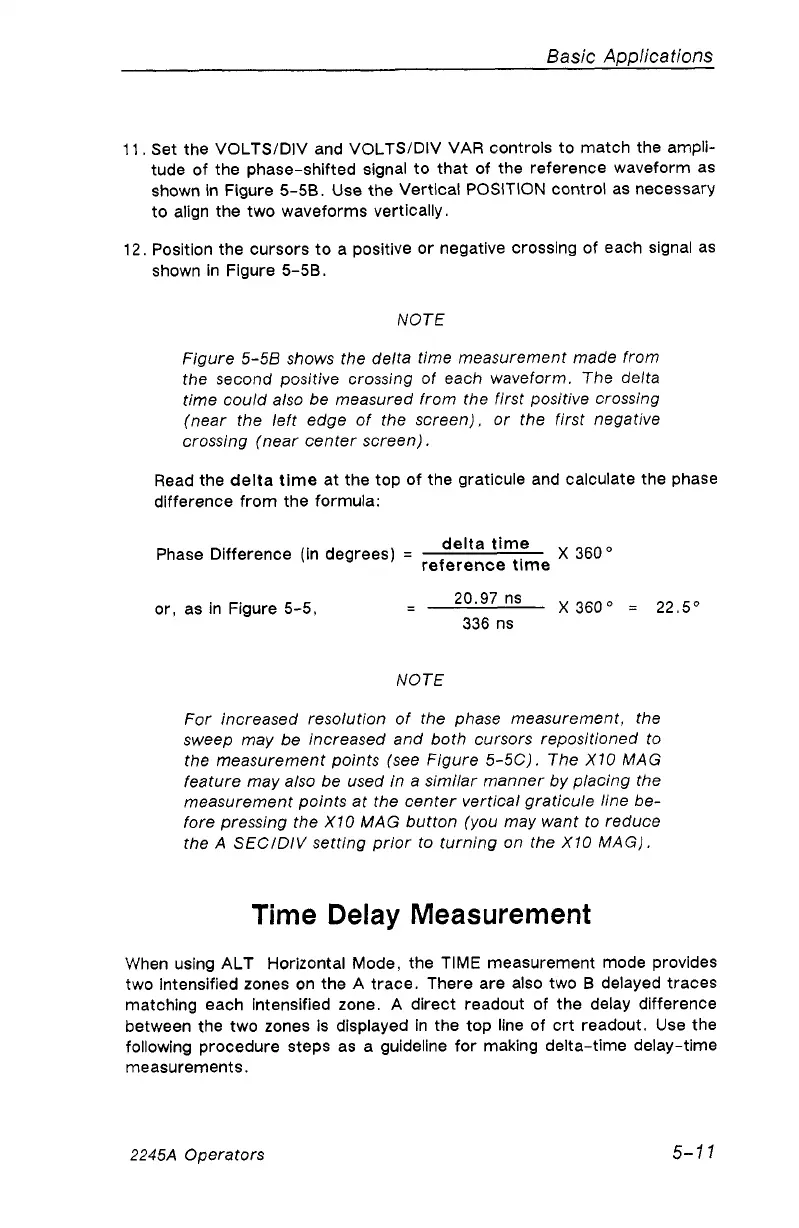Basic Applications
11. Set the VOLTS/DIV and VOLTS/DIV VAR controls to match the ampli
tude of the phase-shifted signal to that of the reference waveform as
shown in Figure 5-5B. Use the Vertical POSITION control as necessary
to align the two waveforms vertically.
12. Position the cursors to a positive or negative crossing of each signal as
shown in Figure 5-5B.
NOTE
Figure 5-5B shows the delta time measurement made from
the second positive crossing of each waveform. The delta
time could also be measured from the first positive crossing
(near the left edge of the screen), or the first negative
crossing (near center screen).
Read the delta time at the top of the graticule and calculate the phase
difference from the formula:
Phase Difference (In degrees) =
delta time
reference time
360°
. _. , ^ 20.97 ns w „„ „ „
or, as in Figure 5-5, = X 360°
336 ns
22.5°
NOTE
For increased resolution of the phase measurement, the
sweep may be increased and both cursors repositioned to
the measurement points (see Figure 5-5C). The X10 MAG
feature may also be used in a similar manner by placing the
measurement points at the center vertical graticule line be
fore pressing the X I0 MAG button (you may want to reduce
the A SEC/DIV setting prior to turning on the X10 MAG).
Time Delay Measurement
When using ALT Horizontal Mode, the TIME measurement mode provides
two Intensified zones on the A trace. There are also two B delayed traces
matching each intensified zone. A direct readout of the delay difference
between the two zones is displayed in the top line of crt readout. Use the
following procedure steps as a guideline for making delta-time delay-time
measurements.
2245A Operators
5-11

